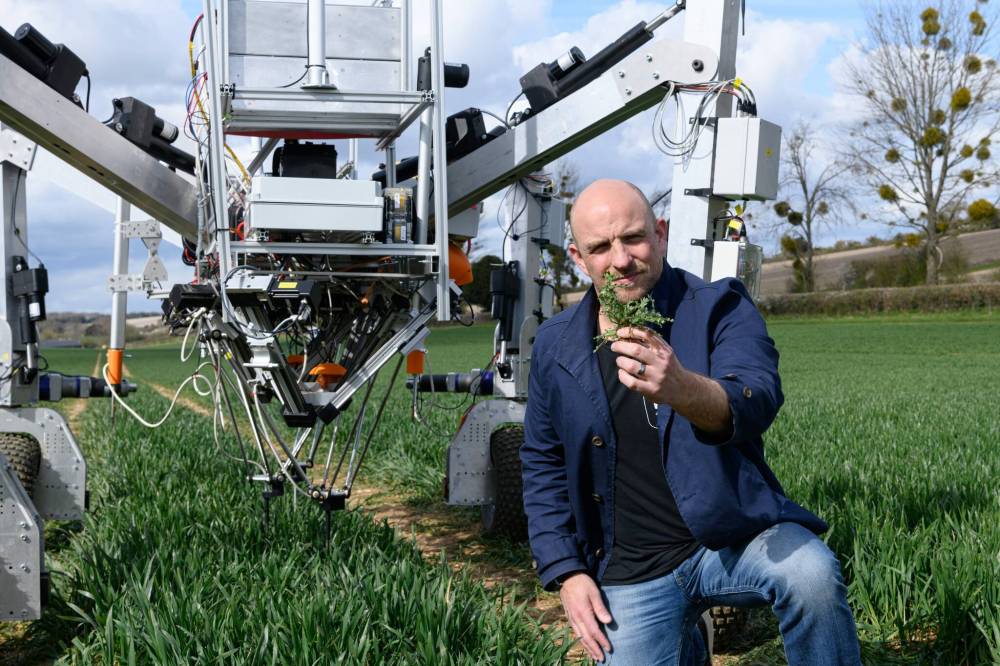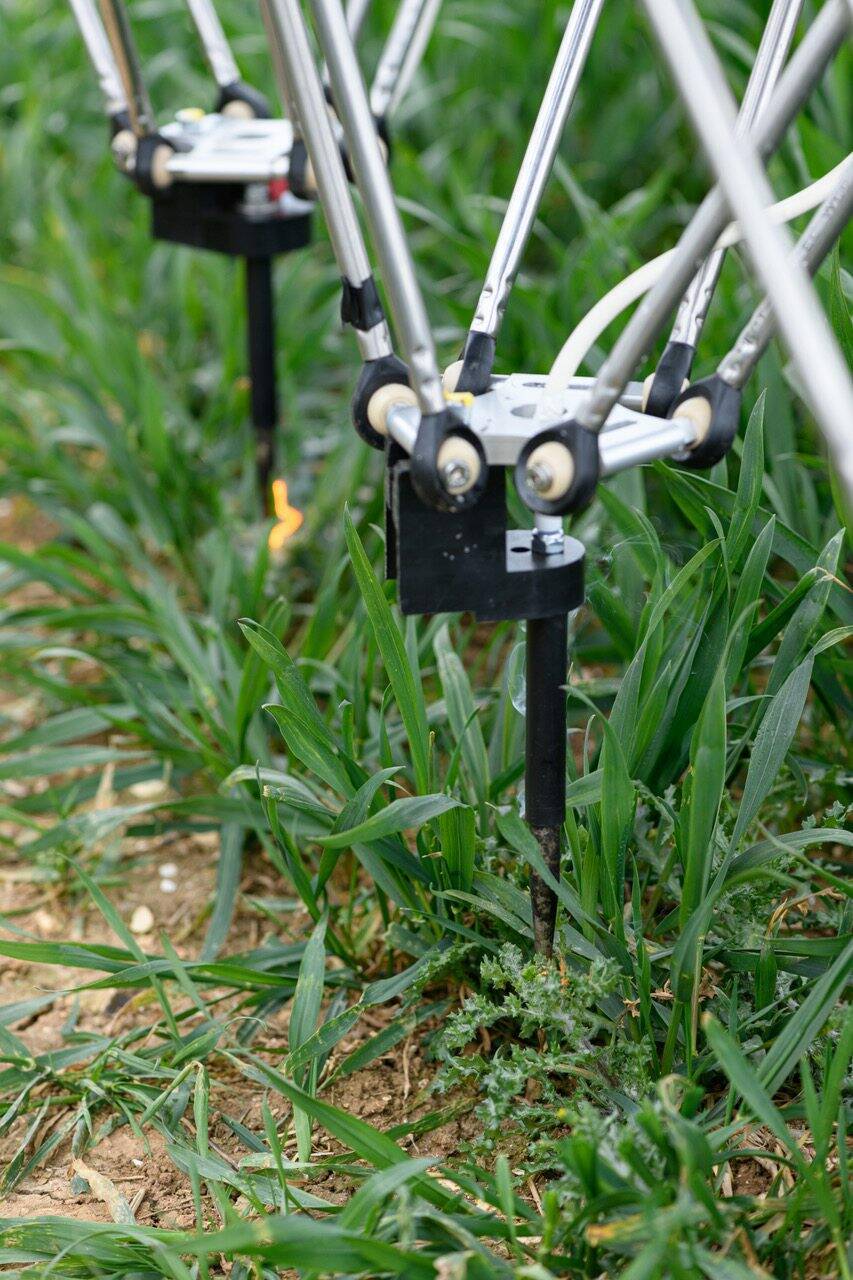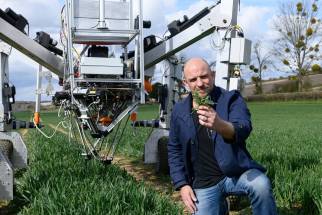Making farming smarter Artificial Intelligence, robotics have potential to radically change how farmers tend their field crops
Read this article for free:
or
Already have an account? Log in here »
To continue reading, please subscribe:
Monthly Digital Subscription
$0 for the first 4 weeks*
- Enjoy unlimited reading on winnipegfreepress.com
- Read the E-Edition, our digital replica newspaper
- Access News Break, our award-winning app
- Play interactive puzzles
*No charge for 4 weeks then price increases to the regular rate of $19.00 plus GST every four weeks. Offer available to new and qualified returning subscribers only. Cancel any time.
Monthly Digital Subscription
$4.75/week*
- Enjoy unlimited reading on winnipegfreepress.com
- Read the E-Edition, our digital replica newspaper
- Access News Break, our award-winning app
- Play interactive puzzles
*Billed as $19 plus GST every four weeks. Cancel any time.
To continue reading, please subscribe:
Add Free Press access to your Brandon Sun subscription for only an additional
$1 for the first 4 weeks*
*Your next subscription payment will increase by $1.00 and you will be charged $16.99 plus GST for four weeks. After four weeks, your payment will increase to $23.99 plus GST every four weeks.
Read unlimited articles for free today:
or
Already have an account? Log in here »
Hey there, time traveller!
This article was published 14/04/2022 (1335 days ago), so information in it may no longer be current.
There’s a lot of buzz in agriculture these days about the role artificial intelligence can play in making farming smarter.
‘Smarter’ in this context is about expanding the farmer’s decision-making capacity with more information, which is made better through data management and extending his or her reach through automated systems.
How that physically plays out in the field is still very much in play as companies jockey for position on the cutting edge, but the various ideas coming to market offer some intriguing possibilities.
For example, take Tom, Dick, Harry and Wilma, a quartet of ground-breaking robots whose unassuming names belie their potential to radically change how farmers tend their field crops.
Their developer, the Small Robot Company based in the U.K., was among 16 startup companies invited to Regina recently to participate in a week of networking and mentorship as part of the AgTech Accelerator program offered by Conexus Credit Union’s Cultivator program, Economic Development Regina and Emmertech. Their goal is to establish the Prairies as a global hub for ag-tech investment, commercialization and job creation.
Small Robot co-founder and CEO Ben Scott-Robinson also took the opportunity to scan the potential for his team of AI farmworkers on the Canadian Prairies.

“The key thing that we’re doing here is rethinking how a farmer can see their crops,” he said in an interview.
“We’re providing per-plant farming… the capacity of being able to have a near real-time view of every single crop plant in the field, and then the capability to go back and apply timely and efficient treatments to those plants to achieve their best potential.”
That’s no small feat considering a typical field contains a million or more plants per acre.
“We’re literally creating a map, and that map allows us to see not just where the plants are, but how they’re growing through the season, and what’s happening to the nutrients over the course of the season,” he said. It also tracks how the plants are interacting with the soil, which allows for comparisons year over year.
“We’re literally creating a map, and that map allows us to see not just where the plants are, but how they’re growing through the season, and what’s happening to the nutrients over the course of the season.” – Ben Scott-Robinson, Small Robot CEO
The system, pieces of which are already operating on British farms, sends Tom out to roam up and down the fields capturing plant population data, which are processed by Wilma, affectionately called “the brains of the outfit.”
Wilma processes that data into per-plant prescriptions that can be programmed into variable-rate farm equipment.
Still in testing is Dick, a robot that provides weed control by zapping the targeted weeds with electrical currents instead of herbicides. Harry, which is still a toddler robot not ready for release, is a precision planting system.
The potential cost savings are huge, as are the implications for the environment.

“The first data pass that we have been doing in the U.K. shows that we can bring down the use of herbicides using existing machinery by somewhere between 60 and 80 per cent,” Scott-Robinson said.
He sees similar potential for savings in fertilizer and disease-control applications, although he doesn’t yet have the data to back that up.
“What we want to do, and this is our ultimate goal, is to give farmers the confidence to not spray fungicide ‘just in case,’ but to have the confidence to say, ‘I know my field does not have disease, so I know that I can step back from that that particular application without fear of losing yield,’” he said.
But will it work here on the Prairies where fields are bigger and the potential gains in productivity are smaller because of differences in soil and climate?
“It seems an incredible stretch from where we are today,” said Langenburg, Sask. farmer Terry Aberhart, who attended the Regina event as one of the speakers.

However, he’s keen on the concept.
“What excites me the most is the potential efficiencies long term, the potential safety, the benefits to the environment and sustainability,” Aberhart said, adding the technology’s biggest appeal is its ability to turn reams of raw data into what he calls “intelligent data” that informs better decisions.
“It’s just a matter of time and it will look different, but I do believe we can get there,” he said.
Laura Rance is vice-president of content for Glacier FarmMedia. She can be reached at lrance@farmmedia.com.

Laura Rance is editorial director at Farm Business Communications.
Our newsroom depends on a growing audience of readers to power our journalism. If you are not a paid reader, please consider becoming a subscriber.
Our newsroom depends on its audience of readers to power our journalism. Thank you for your support.

.jpg?h=215)






